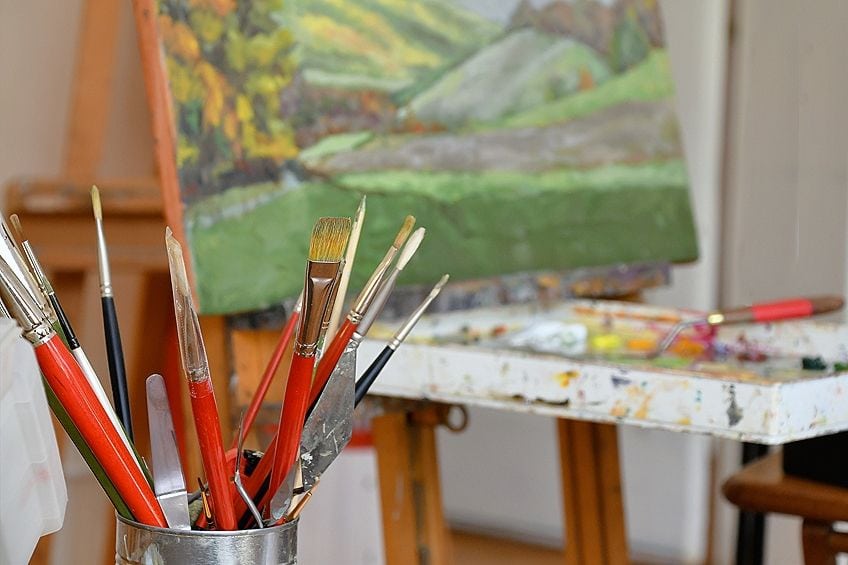Can You Use Oil Paint on Wood? – Painting on Wood Panel
This post may contain affiliate links. We may earn a small commission from purchases made through them, at no additional cost to you.
Artists can use many surfaces to paint on, a canvas being one of the surfaces most commonly. However, you can also do your painting on a wooden surface. Wood is a lot more durable and stronger than canvas, which makes it more archival and has been used by painters even longer than the canvas surface. Oil paints on wood are used often, but if you apply your paint on a wooden surface, you need to ensure that the wood is completely dry and will not warp or rot over time. In this article, we will be advising you on all the necessary steps for applying oil paint on wood correctly.
Table of Contents
Can You Apply Oil Paints on Wood?
Wood has proven over time that it is an excellent surface for oil paints. However, can you just use any type of wood, or are there certain types of wood that are best for oil painting? Amongst the many types of wood available, two types stand out and these include birch and maple wood.
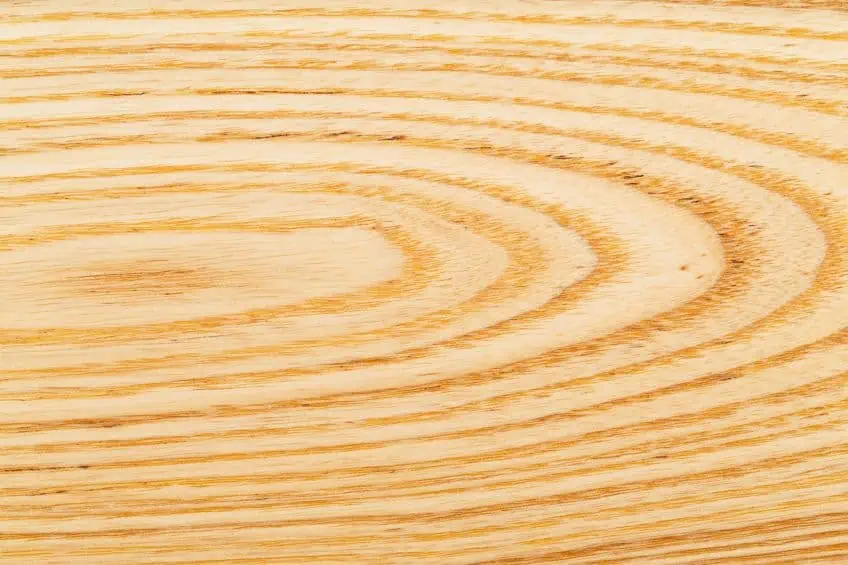
Hardwoods
Birch and maple woods are preferred as oil paints on wood because they are hardwoods. The surface of hardwood is rigid and, therefore, the paint will not crack as it dries. This surface is also heavier than a canvas surface and allows you to do smaller paintings without any problems. The surface of hardwood is also smooth, which allows the paint to glide onto its surface, making it much easier to move the paint around.
Using wood as a surface for your oil paintings is also a lot cheaper than a canvas surface.
- Birchwood is used often for frames supplied by canvas makers and is popular because it is fairly porous, which is why the wood needs to be primed before you paint on it
- Maple wood is an excellent rigid and hardwood and is regarded as the best surface for you to use for your oil paintings
Claybord
Painting on wood panels goes back centuries, where the panels were prepared by adding a mixture of Hide glue and chalk. Today gesso panels contain acrylic polymer binders, which makes the surface a lot less absorbent than the claybord. Claybord has a very absorbent coating that will cause the oil paints to dry very fast with a matte finish.

This quality is perfect when you are working with oil glaze techniques that add style to their images, or underpainting. However, if you are just doing ordinary oil painting, we suggest that you first prepare the surface of the panel to lessen its absorbency. After this preparation is complete, all the subsequent layers of oil paint you apply will dry slower and also maintain their luster.
Surface Preparation or Oiling Out Process
The entire board needs to be sealed before you start applying any paint. Apply a generous coating of 1:1 ratio of oil (like linseed) or oil painting medium and solvent (like odorless mineral spirits) to the entire claybord surface. Give it around two minutes to be completely absorbed into the surface.
Now you can remove the excess coating using a lint-free, soft, clean cloth.
Gessobord
Many artists prefer using the gessobord instead of the claybord, as it is a lot less absorbent, and it needs no preparation before you can use it. Gessobord is specially designed for oil as well as acrylic paints. When applying oil paints to the gessobord, we suggest that you use natural bristle brushes as the pigment in the paint will release much quicker and easier, and it is also easier to clean your brushes afterward.
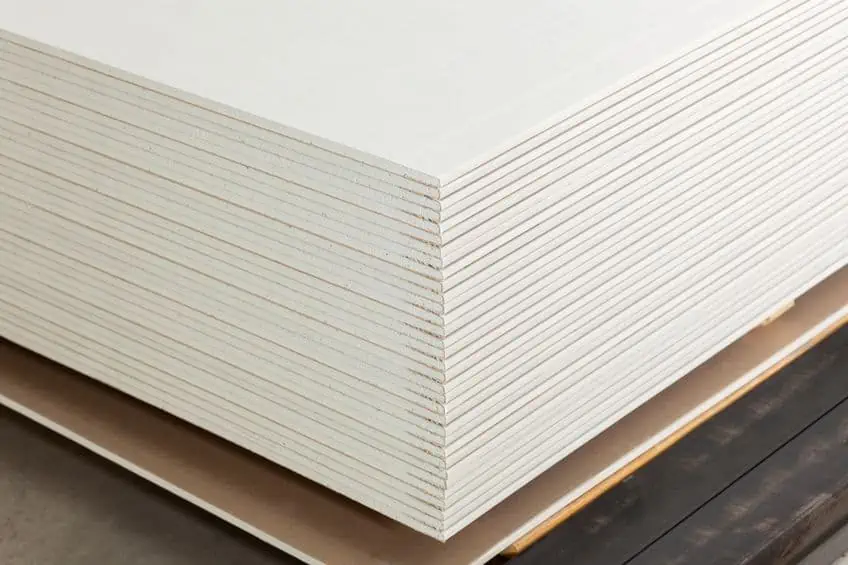
When you start to paint, first thin your paint with some odorless solvent. This will help you with painting fat over thin, which means you start with less oil mixed into your paint. Then you can gradually mix in some more oil as you move towards finishing your painting. This will assist in preventing your paint from peeling or cracking as it dries
Plywood
Another available option is plywood, which can be obtained in less than an inch thick, making it a lot lighter as well as a great deal cheaper. However, plywood is a compressed board that has many crevices where moisture can accumulate and needs to be properly sealed before you use it. There is also the laminated compressed cardboard that has a mica film on it, and this requires a lot less treatment but is much more difficult to work with.
You need to avoid using oak plywood as the pores in the oak will never allow the primer to seal the surface properly.
Softwoods
Softwoods such as pine are not suitable for oil paints, as they contain a lot of resins that will cause the paint to crack after it dries. If you are going to use softwood for your oil painting, it is vital that you first prepare the wood properly with a primer or sealer before you apply your oil paint.
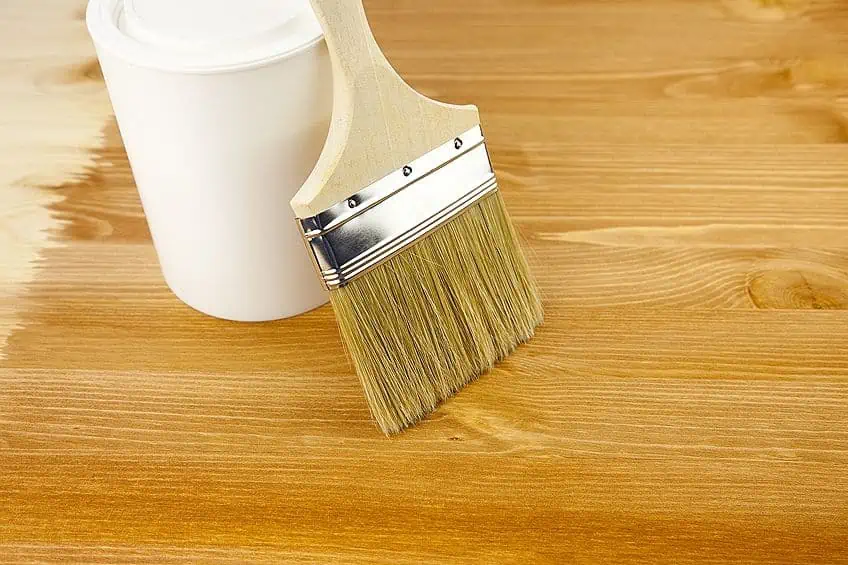
Types of Paint for Wood
There are hundreds of different types of paint on the market, making it very difficult to know what type of paint to use. You need to ask yourself what type of wooden surface you are going to be painting on, as all wooden surfaces react differently to the various types of paint.
So, let us help you to consider what the best paint is for your project.
Oil-Based Paint for Wood
Oil paints are preferred by many because they are durable and leave you with a smooth surface after it dries, which can be either gloss or matte depending on the paint you choose. Oil-based paints contain solvents that usually have a high level of Volatile Organic Compounds (VOCs) and need to be applied in a safe well-ventilated area.

Oil-based paints contain a ground-colored pigment that is mixed with oil. The quality of your paint will be subject to the quality of the pigments used. If you mix more oil into the paint, you can make it more fluid, and adding some solvent will weaken the paint. Oil-based paints are also a lot thicker and take much longer to dry, and require a solvent or spirits to clean up afterward. To attain the desired finish, you need to apply oil paints with high-quality paintbrushes, rather than using a paint roller to apply the paint.
Latex Paint for Wood
Latex paints are a lot easier and quicker to work with than oil-based paints, but it does not have the same durability as oil-based paints. Also, the paint is prone to show visible brush strokes on your final paint finish. To reduce the brushstrokes, you should use some Floetrol (a latex paint additive) in your paint when mixing. This will help the performance of the paint to make it flow like oil paints. When applying your latex paint, depending on what type of finish you are after, the semi-gloss and gloss finishes do not require a top or finish coat. However, the matte and satin finish will need a finish or top coat to give you the best results.
Unlike oil-based paints, all you need to clean up afterward is some warm soapy water.
Water-Based Paint for Wood
Water-based paints are the easiest paints to use out of all the different types of paint. They are not as durable as oil-based paints, but they are not sensitive to the UV rays, and are also very flexible and allow movement, which means they are less likely to crack. Water-based paints dry very fast, and you can easily apply more than one coat in a single day, but the climate can affect the paint.
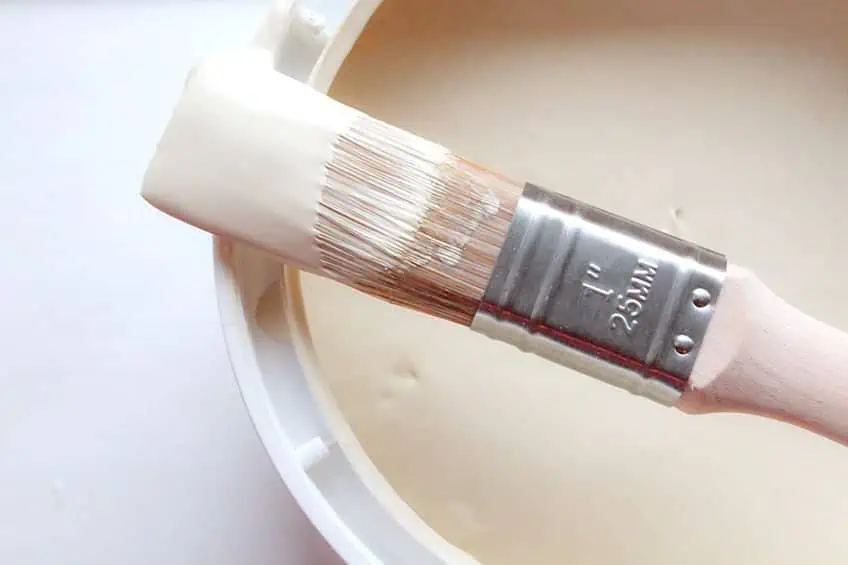
With very high humidity, the paint will not dry fully, and lower temperatures can also affect the application process. By drying too slowly or too fast, the performance of the paint can be compromised over the long term. However, for cleaning up purposes, water-based paints are a breeze as it only requires a small amount of water to clean up the mess. Types of water-based paints also include chalk and milk paint.
Acrylic Craft Paint for Wood
You can make use of acrylic craft paint for your wooden project, but it is best used when the project is fairly small, as it provides an artistic appearance. These paints dry very fast and do not have an odor, so you can safely use them in your home with your family. Acrylic craft paints are available in a variety of different colors, sheens, and decorative options, which allows you to easily mix your colors. The paint is very easy to use even for the kids.
Acrylic craft paints are fairly cheap and can be purchased in sizes and quantities that will match your particular project.
Oil Canvas Paint
Oil canvas paint products come in 37 ml tubes and are high-quality oil paints, but they are rather expensive. So, it is recommended that if you are a beginner, you first buy the less expensive brands which will allow you to practice and experiment without breaking the bank. As soon as you gain more experience in oil painting, you can purchase the more expensive brands and colors. These paints are divided into two basic options, the student-grade paints which are cheaper, but they have added stabilizers and fillers in the pigment and oil. This affects the color as the additives are synthetic, which leads to color discrepancies.
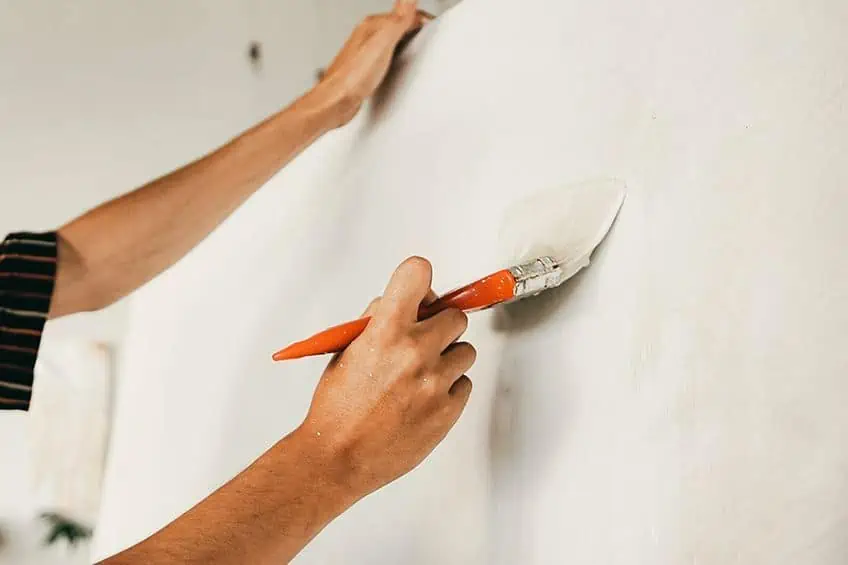
The other option is the artist-grade oil paints that are specially designed for permanent and vibrant colors. These are pure paints made from pigment and oil, poppy or linseed. They are more expensive but they will give you professional paint quality, and because the pigment load is higher, you will need less paint to give you those vibrant and beautiful colors.
Preparing the Wood Surface for Oil Painting
If you are starting a project and painting on wood, you need to first understand a few very important factors. The wooden surface you are going to paint may be bare wood or wood that has already been painted. Regardless of this, your wooden surface needs to be properly prepared before you begin to paint on it, so you can protect the paint itself as well as the wood. Wood can be a very difficult surface to paint on as the natural fibers of the wood will absorb a lot of paint, so the surface needs to be sealed before you start.
The wood grain on the surface can also form an uneven finish, so for a smoother and more professional look, the wood surface needs to be primed before you begin to paint.
Priming or Sealing the Wood
Should you prime or seal the wood surface? Sealing the wood surface will protect it by reducing the possibility of wood warping, staining, or rotting. Priming the surface lays a solid foundation for the layers of paint you intend to apply and also helps the adhesion of the paint to the wood surface.
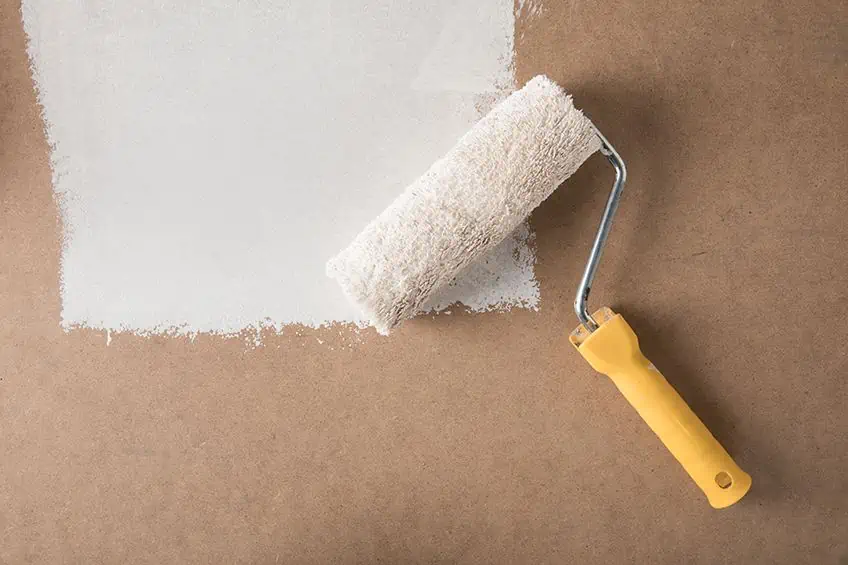
To protect your wood and to leave it with a beautiful finish, we suggest that you do both. You can seal the surface first, then apply your primer. First, apply a minimum of two coats of the sealer, especially if it is raw wood, this will form a barrier over the wood surface and protect it. After it has dried, you can apply the primer which will help the adhesion of the paint to the wood, then the surface is ready for the topcoat.
Types of Wood Sealers
There are two basic types of wood sealers, the sealers that are used to penetrate the wood and the sealers that are used for coating the wood surface.
Linseed oil and tung oil are some of the penetrating sealers, while varnish or lacquers are coating wood sealers.
Water-Based Wood Sealers
These types of wood sealers seem to be more popular as they are very fast drying and have no toxic odors, so you can apply them indoors as well. However, the water-based sealers need multiple layers for them to be properly effective, which could make them more expensive than the oil-based wood sealers.

Oil-Based Wood Sealers
Oil-based wood sealers have toxic odors and need to be applied in a well-ventilated area or outdoors, but they require fewer coats than water-based wood sealers. However, they take much longer to dry properly.
Also, you need to wear some protective items and clothing when applying them.
Types of Wood Primers
We have already learned that the primer is a special foundation layer that will assist the paint to adhere to the wood surface. Primers come in three basic types, oil-based, latex-based, and shellac primers. All of these wood primers have their weaknesses and strengths, so you will find that each one works best when applied to certain wood surfaces as well in certain circumstances.
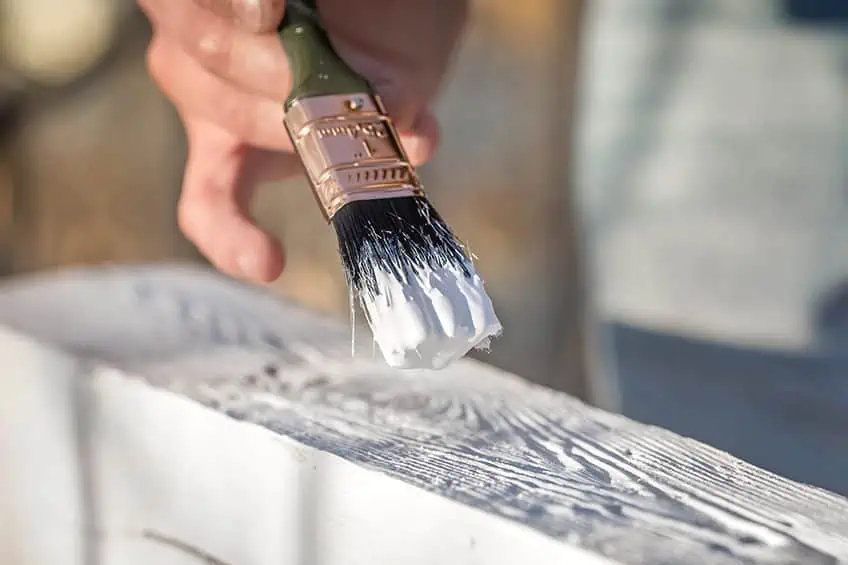
Oil-Based Wood Primers
The oil-based primers are effective with latex as well as oil paints, which make them very versatile, and they can also be applied to several different types of surfaces. Whether the wood surface is painted or bare wood, metal, wood, interior, and exterior oil-based primers are the perfect solutions. Oil-based primers are used to prevent stains from showing through your paints, and they also block out stains like ink, water, and nicotine. They also stop tannins from bleeding through the paint surface and prevent cracking, peeling, and blistering. The disadvantages of oil-based primers are that they are very slow drying and also emit dangerous toxic odors and fumes, and require harsh cleaners like thinners and solvents for cleaning applications.
You should not apply oil-based primers to any masonry surfaces.
Latex-Based Wood Primers
Latex or water-based primers are perfect for wood surfaces, and they are very fast drying and a lot more flexible than oil-based primers, which makes the paint surface less susceptible to peeling and cracking. They are recommended for use mainly on softwoods, galvanized metals, concrete, and brick.

Latex wood primers are ideal for covering stains like lipstick, crayon, and smoke but are not very effective in covering stains like oil-based primers. They are water-based and easy to clean with some water, and they do not emit any toxic or harmful odors or fumes.
Shellac Wood Primers
Shellac primers have been used for hundreds of years to seal and protect wood surfaces, and are the best stain blockers on the market, sealing the smell of water and smoke damage. They are also excellent for use to prevent water, smoke, and rust stains as well as protecting your wood from tannins bleeding through the paint. They are very effective for use on metal, plastic, wood, and plaster, are very fast drying with a high adhesive bond, and you can use them with latex or oil-based paints. Unfortunately, they are not as versatile as the latex and oil-based primers. These also emit harmful fumes as they need denatured alcohol for thinning as well as for cleaning purposes.
All of the above information may be a lot to take in, so to make things a little easier for you, we have compiled a table listing all the available types of wood sealers and primers which should be of help when you go out to buy the wood sealers and primers.
| Wood Sealers | Wood Primers |
| Water-Based | Oil-based |
| Oil-Based | Latex-based |
| Turpentine | Shellac |
| Tung Oil | Gesso |
| Linseed Oil | High-hide stain-blocking latex primer |
| Varnish | Cover stain interior/exterior oil primer |
Instructions on How to Prime Wood for Oil Painting
We have just seen, in detail, the various types of wood sealers and primers available, and how vital it is to first apply a primer coat before you start to paint. Let us now guide you through, step by step, the process you need to follow to prepare your wood properly with a wood primer.
- Ensure that the wood surface is properly clean from any dust as this may affect the sealer causing an uneven finish.
- Use a damp cloth so the wood can dry properly.
- Spread the first layer of sealer and let this dry thoroughly.
- Make sure you apply the sealer to both sides of the wood.

- If you find some rough or uneven places, use fine-grit sandpaper, and wipe it clean.
- Apply a second layer of sealer and let dry thoroughly.
- Apply the primer.
- If you intend to use oil paints on your painting, you need to wait a few days before you start to paint.
How to Apply Oil Paints on Wood
Whether you are painting your furniture, door, or window frames or busy with an art project, applying oil paint to your wooden surfaces will cause the paint to last longer and also give you a hard, durable, glossy, and smooth finish.
The paint is also available in many different colors and finishes. Here is a step-by-step process for applying oil paint to your wooden surfaces.
Preparation
The wood surface you are going to paint must be clean and smooth. Make use of fine-grit sandpaper to smooth the surface. Next, apply a sealer or primer filling up any rifts or fissures, this gives the surface a uniform area for the paint to stick to. Try to use a color that will go with your oil paint color, so as not to cause any dark undertones. Sand the surface again and ensure you remove any dust before you begin to paint.

Paint Brushes and Final Touches
The type of brushes you use is very important to give you that smooth and glossy finish. Make use of a high-quality natural hair brush that will be able to maintain a uniform thickness with each stroke of your brush. Try not to load too much paint on the brush at one time, you will begin to notice the brush strokes disappear as the paint begins to dry. This process will apply to the primer as well as the top coat of oil paint.
Sand the wood surface down again lightly using fine-grit sandpaper, and then you can apply another coat if it is required, or if the item you painted is subject to heavy usage.
Some Tips When Using Oil-Based Paint for Wood
Nobody wants to go back and remove the paint you have just applied because you have not followed the basic steps when applying the sealer and paint. You also want to have a wood surface that you can be proud of, so we have gathered a few tips for you to follow to help make the wood painting experience more effective, and provide you with a beautifully smooth and stain-free wood surface.

Primers
We cannot express enough the importance of priming your wooden surface first before you begin to paint. This will help the paint to adhere better to the surface, forming a solid bond as well as giving the surface a smoother finish. The primer will also help in preventing flashing, which means your final paint job finish looks like you used different paint glosses.
We suggest you use a high-quality primer brand.
Rollers or Brushes?
When using paint rollers, you can cover a larger area much quicker than with a paintbrush, but you cannot get into the corners. So, to end up with a smooth surface finish, you need to use a high-density foam paint roller. Paintbrushes are ideal for use when trying to get into the corners or small sections, but it will take you a long time if you want to do the whole surface with a brush.
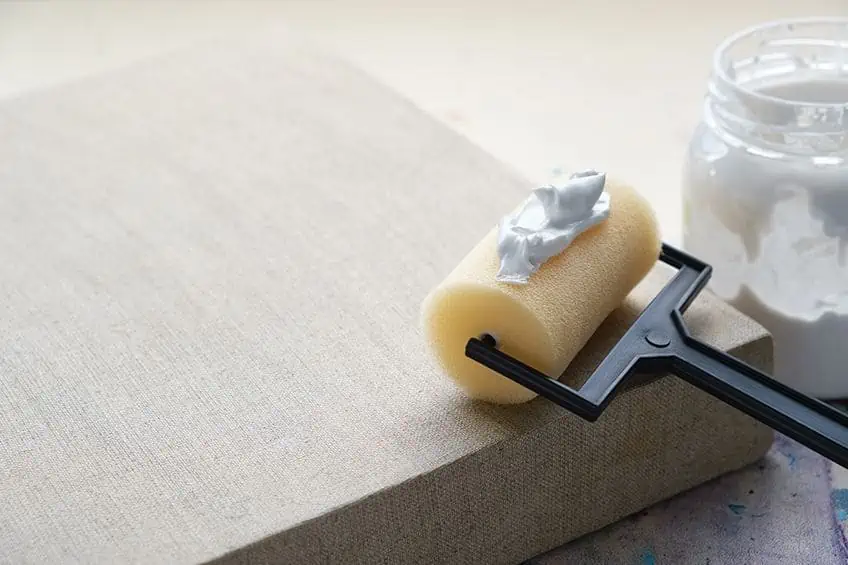
However, if your project is to cover a small surface area, then the use of a paintbrush will be the perfect tool. There is a painting technique that is referred to as back-brushes, where you use your paintbrush after rolling to do away with drips and lines.
Paint Additives
When you are slow with your painting and take too long, then your paint can become slightly tacky which can cause brush drag. You need to pick up your pace a bit and work faster, or you can include an additive to your paint that will extend the drying time, allowing you more time to work. Some additives that you can consider are Floetrol or Penetrol that will help you in creating much smoother brush strokes.
Try not to paint directly under a heating or cooling fan vent or in direct sunlight as all of these conditions accelerate your paint’s drying time and will lead to tacky paint.
Over the centuries, canvas has been the acceptable medium to use for your paintings, but today, painting is also done on wooden surfaces, like hardwoods, plywood, painting on wood panels, and even on some softwood. This is because a wood surface is more stable and solid, while a canvas is flexible which could result in paint cracking. However, acrylic paint which is now popular is very flexible and is now used extensively on canvas by many artists. Acrylic paints are also widely used for painting on a wooden surface, making wood a very versatile and excellent medium to use for oil as well as latex paints.
Take a look at our oil painting on wood panel webstory here!
Frequently Asked Questions
Can You Use Oil Paint on Wood?
Although canvas is a very popular surface to paint on with oil paints, other surfaces like hardwood, cardboard, or even a brick wall are used for oil paintings.
Why Is Oil-Based Paint Sometimes Sticky?
The most common reason for oil paint to remain sticky is because the paint has been applied to the surface too thick, as well as too quickly. The paint needs to be the right thickness and you need to wait for the first layer of paint to dry properly before you apply the next layer.
Does It Take Long for Oil Paints on Wood to Dry?
Oil paint takes around six to eight hours to dry to the touch, but you need to wait about 24 hours before you apply the next coat. Also, it can take up to 30 days or more for the paint to cure properly.
Is Oil Paint Waterproof?
Oil-based paints are made from ground pigments suspended in oil mediums such as linseed oil. When they are properly cured, then the paint will form a hard, water-resistant layer that will be waterproof.
What Primer Is Best for Wood?
The type of primer you apply depends on the surface that will be painted. Also, you need to take into account the type of finish you intend to use for your final coat.
What Will Happen When a Primer is Not Applied to Wood?
If you are going to paint directly onto a bare wooden surface, then the paint will just soak into the wood, and you will have to repeat the process over and over again. This can cause the paint to peel off and you will have to do everything over again. So, to prevent an issue, always use a primer.
In 2005, Charlene completed her wellness degrees in therapeutic aromatherapy and reflexology at the International School of Reflexology and Meridian Therapy. She worked for a company offering corporate wellness programs for several years before opening her own therapy practice. In 2015, she was asked by a digital marketer friend to join her company as a content creator, and it was here that she discovered her enthusiasm for writing. Since entering the world of content creation, she has gained a lot of experience over the years writing about various topics such as beauty, health, wellness, travel, crafting, and much more. Due to various circumstances, she had to give up her therapy practice and now works as a freelance writer. Since she is a very creative person and as a balance to writing likes to be active in various areas of art and crafts, the activity at acrylgiessen.com is perfect for her to contribute their knowledge and experience in various creative topics.
Learn more about Charlene Lewis and about us.
